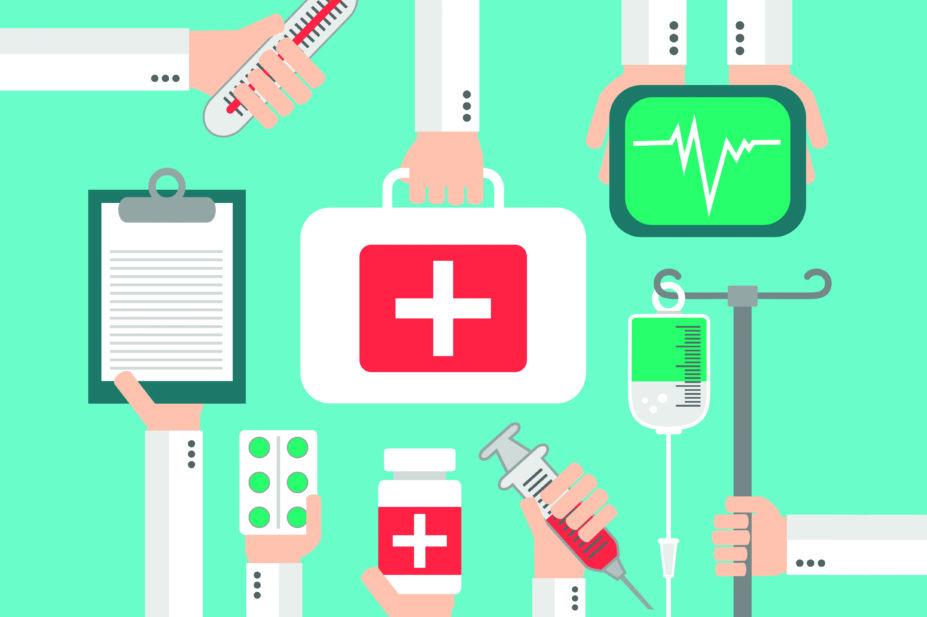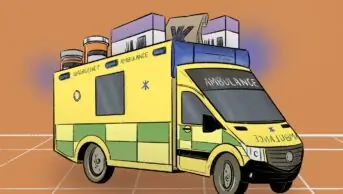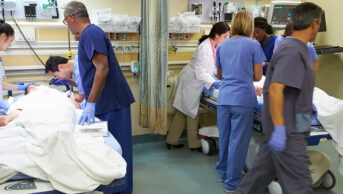
iStock
“The stark fact is if we carry on as we are, we have an unsustainable system, which will hurt staff morale, patient experience and patient outcomes.”
The message from Keith Willett, NHS England’s director of acute care, is simple: the urgent care system in England must adapt or be overwhelmed.
In a frank and expansive presentation at an event hosted by think tank The King’s Fund in London on 22 September 2015, Willett explained how urgent care in England is saturated.
According to NHS England figures, each year NHS 111 now handles 24 million calls, there are 7 million emergency ambulance journeys, 16 million attendances at major or specialty A&E departments, 5 million attendances at minor injury units and walk-in centres, and 5.4 million emergency admissions. Demand is growing by an estimated 4–6% per year.
Against this backdrop, the NHS will expect pharmacists to take on roles throughout all levels of the new urgent care system that is being developed to cope with these demands – led by the Urgent and Emergency Care Review, established by NHS England medical director Sir Bruce Keogh in 2013.
As the cooler weather sweeps in, the NHS is again bracing itself for a tough few months. Last year, when the NHS experienced its most difficult winter for years, attendances were actually lower than in the summer months: instead, higher admissions caused the problems. Over this summer, admissions have broadly continued to rise, suggesting this winter may be even more challenging.
Where does this pressure originate? Willett believes the inability to access urgent care in the community is a “probable” contributor. An NHS England survey during the week of 28 December 2014, the height of the winter pressures, found one in four people said they would visit A&E for a condition recognised as not urgent if they couldn’t access general practice. Perhaps even more alarmingly, one in four people weren’t aware of out-of-hours general practice.
The Keogh review calls for the creation of urgent care networks covering populations of 1–5m people that will coordinate regional urgent care services. As the review enters the “implementation” phase, pharmacy is beginning to see more clearly where it sits within this new setup.
Willett’s presentation referred to “harnessing” skills of community pharmacists, particularly treating the minor ailments that so commonly end up at A&E. (This may suggest that, despite the recent failure of talks to introduce a national service, the need to treat more patients in the community will be sufficient to break the impasse next year.)
There should be more multidisciplinary clinical input into decisions about patient’s urgent care out of hospital, including from pharmacists, he said. “We shouldn’t need to make a decision in isolation.”
As well as pharmacists in NHS 111 call centres to improve clinical triage and reduce the need for patients to attend A&E for medicines queries, the telephone service should also book patients into pharmacy consultations in the community, the review’s plan says.
Pharmacists may also be deployed more widely in A&E departments. Data from a Health Education England pilot across 48 NHS trusts investigating the roles that pharmacists could play are due late October. This follows an initial pilot in the West Midlands that found almost 40% of presentations could be dealt with by an advanced clinical practice pharmacist; about 5% by pharmacist independent prescribers and 3% by community pharmacists.
Anthony Sinclair, chief pharmacist at the Birmingham Children’s Hospital, explained how its early scoping work, which preceded the regional and national pilots, found 40% of 45 hospital emergency departments in England already employ pharmacy staff, either a pharmacy technician or pharmacist. These staff were undertaking traditional pharmacy roles such as medicines reconciliation, clinical pharmacy support and discharge.
The final results of the national project could be influential in making the case to commissioners, trusts and NHS England officials that pharmacists can help to alleviate some of the strain within A&E departments.
With these results imminent, and urgent care networks soon to be established, pharmacy’s role in the new urgent and emergency care system is finally taking shape.


